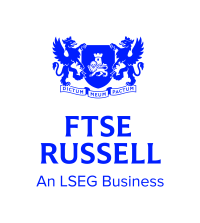The Savvy Investor Back Office & Custody section carries the latest articles, white papers, and evergreen commentary on the administration and support services utilised by the financial firms that deal with what follows on from client-facing interaction (otherwise known as the ‘non-client facing’ side of the business).
The back-office services non-client facing roles, such as: Settlement, clearing, records, compliance, accounts, and IT...
.
Traditionally found in investment banks, back-office personnel would handle the ‘behind the scenes’ of the trading floor. Settlement is the process which ensures payments for trades placed are processed. During settlement, clearing ensures the accurate and timely transfer of funds. Clearing takes place in a centralised location, and reconciles purchases and sales of options, futures, and securities, and effects the direct transfer of funds between financial institutions and transaction parties.
Records, governed by regulatory bodies such as Senior Management Arrangements, Systems and Controls (SYSC), MiFID II, etc., keep the transaction history for compliance and accounting purposes.
Custody, or custodianship (custodians), is the safekeeping of financial securities, physical or digital, as a loss-preventing measure. A ‘custodian’ would not engage in the ‘traditional’ commercial, consumer/retail banking services, but would only act as a gatekeeper to all global assets/securities transacted worldwide. In all countries, countries have adopted the Council Directive No85/611/EEC of 1985 (UCITS Directive), as a minimum level of investor protection.
Custodian companies, through risk-mitigation practices, seek to reduce investors’ exposure to operational failure in the asset management service through two strategies: ex ante and ex post. The former seeks to reduce the frequency of failures whilst the latter bears the loss where failure occurs. Through segregation of assets, third-party custodianship, and regulatory governance, investors can be better protected.
Back-end office systems, typically coined as ‘Operations’, rely heavily on state-of-the-art IT equipment and infrastructure. Fund dealing and settlement processing require multiple order-routing systems and high-frequency settlement reconciliation systems to create the instantaneous transaction speed which global trading currently relies on, thanks to its increased adoption of smart technologies in high-frequency trading (HFT) and algorithmic trading systems.
Clearing systems, such as CREST, or Calastone, deal with listed securities and UK funds which allow for simultaneous ‘checking’ against Anti-Money Laundering (AML) or ‘Know Your Client’ (KYC).
Back office and custody pertain to:
- SYSC, MiFID (II), IFRS, AIFMD, SFDR, SDR, CSDR, MAS, ESMA, FCA, UMR, FSMA, MLD5, Council Directive No85/611/EEC of 1985 (UCITS Directive), CSD, CPSS, IOSCO, CASS








